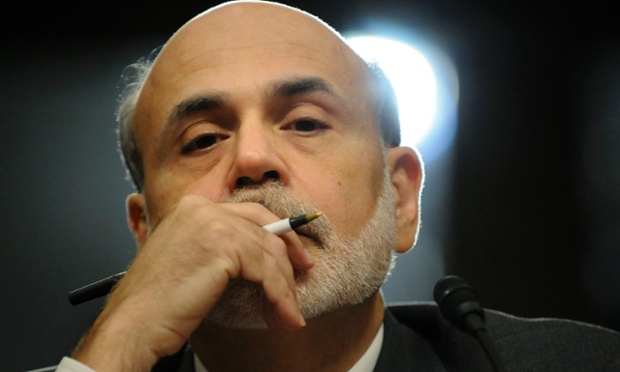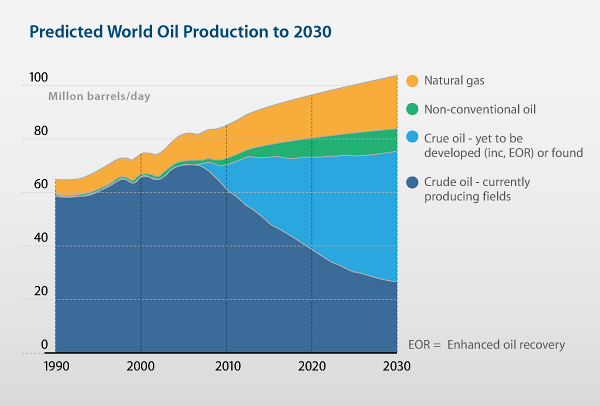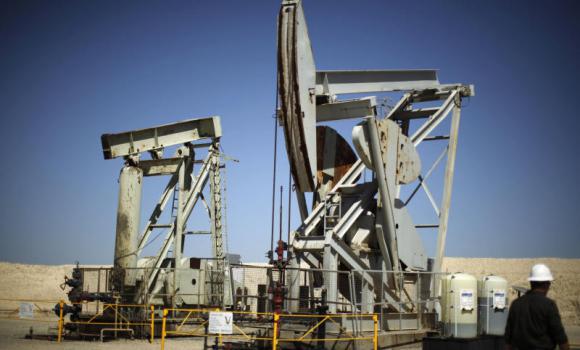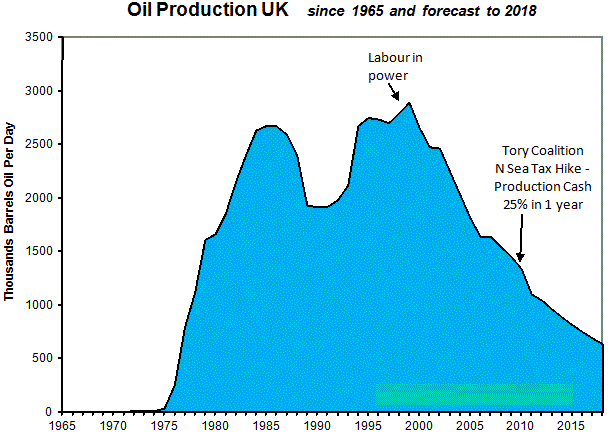481: What Happened To Peak Oil - UK Inflation, Oil Prices and Property
07-19-2013
PropertyInvesting.net team
Is
Peak Oil Dead? Interesting all the debate at the moment
about the end of the so call Peak Oil theory Peak Oil Is Dead and the like. Its
certainly true that total oil liquids production has been slowly rising as new
supplies have come on stream particularly from Canada (heavy oil) USA (oil
shale) in the last four years. What does this all mean? Does the world need to worry
about oil supplies anymore?
High
Oil Prices: Between 1980 and 2000 during the boom
years for western oil importing developed economies oil prices averaged
around $20/bbl. Then in 2000 the commodities bull run started and oil prices
climbed to $148/bbl in 2008 before collapsing during the financial crisis to
$60 and then rising back to a plateau of $100/bbl. Despite a ten fold increase
in oil prices, new supplies have only been growing at about 1.5% a year as the global
population and global GDP growth have averaged about 2% and 3%  respectively during the
last 15 years.
respectively during the
last 15 years.
Dollar
Printing: The US Fed recently pumped $3 Trillion into the global
economy they created inflation overseas whilst the dollar stayed reasonably
highly valued against most foreign currencies. This has added to costs and inflation all around the
globe the American have exported inflation, particularly to places like China. This has also help increase the
price of oil and the cost of oil extraction.
High
Oil Extraction Costs: The cost of oil extraction has skyrocketed
from about $6/bbl in 1999 to $70/bbl in 2013 for new oil developments. The key
aspect is that at oil prices levels of $100/bbl it makes large additional marginal resources
economic these can then be developed and transferred into producible and proven
reserves. Without high oil prices, supply would drop back sharply. These resources
are often unconventional heavy oil sands or oil from tight shale formations
or from deepwater offshore difficult to extract and highly energy intensity
resources.
Hydrocarbon Liquids a New Assortment: Total heavy oil sands production is now around 3 million barrels a day of the 90 million produced. On top of this, there is about 2.5 million barrels of oil from shale fracced horizontal wells. Then there is an additional 2 million barrels of natural gas liquids from shale gas fracced horizontal wells compared with ten years ago. Then there is another 2 million barrels of natural gas liquids from new big gas developments. On top of this, there is about 2 million barrels of biofuels from corn and sugar cane. If you take away all these new unconventional types of oil the conventional oil production has been in decline since 2002. So we are at Peak Conventional Oil, Peak Cheap Oil or Peak Easy Oil, but we not at Peak Oil thats all hydrocarbon liquids. It seems the global oil industry is able to keep pace at this time with demand as long as oil prices stay at about $100/bbl. If they slip, we would expect oil supplies to drop and development are cancelled and/or high cost oil producers are shut-in. But then, if oil prices rose to $150/bbl a new set of resources would be evaluated for development and activity levels would rise. This is like typical market-capital economics you increase the price then supply comes on stream. But the twist is like in gold and silver mining the prices have got to rise to make it economic to access these depleting resources. The easy oil has all but been produced. Recall in 1985, it cost Saudi Arabia 20 cents a barrel to produce their oil. But now it probably costs $5-$25/bbl - they are the low cost oil producer but even in Saudi Arabia because of higher maintenance costs, more wells, new water injection schemes, higher water cuts, oil processing costs and smaller new fields coming on stream.

OPEC
Oil: More non-OPEC oil is now being produced than
ever before from an increasing number of oil producing countries. But new
discoveries are small, incremental and large new basins are generally not being
opened up like Alaska and the North Sea in the 1970s-80s. Brazil's new oil reserves are deep, in deepwater at very high pressures - costing billions to develop. OPEC production this
month actually declined despite the increasing oil price almost certainly
because of political-social problems sweeping the Middle East-Levant-North Africa regions to name a few oil
producing countries affected: Syria, Nigeria, Libya, Egypt, Tunisia, Algeria
(one gas plant attack), Yemen and Iraq. Venezuela has major economic problems
and oil production that has halved since Chevaz gained power in 1999. Ecuador
is also languishing. The message is these production problems are not likely
to go away any time soon if anything, the instability is likely to worsen. So
we expect OPEC supplies to struggle. Meanwhile US and Canadian oil supplie s
will increase as more oil shale and oil sands deposits are developed. These two
forces might actually offset each other to a large extent.
s
will increase as more oil shale and oil sands deposits are developed. These two
forces might actually offset each other to a large extent.
Demand
Rise: But oil demand from the US is certainly on the rise
inventories are dropping, and European oil demand could pick up later in the
year if the economy starts to improve. China looks like their economy is
slowing dramatically but their oil demand will probably continue to rise as
industrialisation continues. Overall, we see a tightening of oil supplies and
increasing oil demand which will send oil prices higher again. This will give
the illusion of global growth but it will soon translate into higher
inflation and economic problems sometime in the next six months. As fuel and
food prices rise again, expect more riots in all countries particularly hot
developing nations that import oil and have no oil subsidies.
Skyrocketing
Oil Price: This brings us to the UK economy that is now very
exposed to increasing oil prices. Since Mark Carney became Governor of the Bank
of England, Sterling has crashed 7% against the dollar. This means oil prices
are 7% higher. Then the oil price has risen 13% in this short period of time
thats a 20% increase in oil prices in
Sterling terms in 4 weeks. Now it does not take a rocket scientist to predict
that this will feed rapidly through to UK inflation in the next few months.
Inflation will zoom up past 3% and head over 4% by year end thats our
prediction. Then the BoE will be writing letters to the Chancellor and blaming
it on a temporary external influences it cannot control and claim because of
this its all okay.
Oil
Imports Rise: Its particularly sad because the UK now
imports 50% of its oil needs and 65% of its gas needs and oil and gas
production crashed 19% in 2011 immediately after the Chancellor put up North Sea
oil taxes this killed off investment in the UK sector of the North Sea. It
then crashed a further 12% in 2012 a year later. This means the oil import bill
is far larger after this  33% production loss and this affects the balance of
payments deficits and sustainable debt levels. And this will only get worse as
the decline continues.
33% production loss and this affects the balance of
payments deficits and sustainable debt levels. And this will only get worse as
the decline continues.
Sterling Slide: The UK Sterling used to be considered a petrocurrency in the 1980s and 1990s this has more or less ended now. Because of this, Sterling has declined and will continue its decline along with North Sea Oil. And because of this, oil prices in dollars rises. So we have a double whammy from lower North Sea oil production. Because the North Sea oil and gas production is bunched in with manufacturing when you hear about our manufacturing decline a large part of this is the decline in the value of the gas and oil being extracted from the North Sea. It seems no-one in the UK is really interested in this the oil and gas production crash and decline in tax revenues from the numerous Treasury tax increases over the years burdening oil and gas producers the largest companies all left a long time ago for higher returns in other countries with better fiscal terms.
Decline
in Oil Bad For Economy: Hope you can see that less oil
increases the deficit, increases borrowing, decreases the value of Sterling and
increases inflation. To prevent Sterling declining further and to control
inflation and interest rates may need to rise by year end so watch out. Of
course, if interest rates rose, then any economy recovery would be snuffed out
before it got going. This is the situation we are now in. It looks like
stagflation thats inflation at 4+%, wage inflation at 1.5% and rising
interest rates by year end if oil prices keep rising and Sterling keeps declining
on current trends.
This would then effect GDP growth that would be miserable might even turn negative again. Then property prices would be affected.

Feel Good Factors: What we are seeing is some
positive indicators feeding through the sunny weather is certainly helping
with the feel good factor and people are starting to spend money they have not
got again. But just as things look as if they might start getting back to
normal, our prediction is we will be hit by higher inflation and the economy
will then struggle.
We just have to hope and
pray bond yields dont start rising sharply because if this happens then
the public and private sector debt payments would skyrocket then a financial
collapse could start.
Work
Cut Out: Mark Carney
will really have his work cut out by year end trying to stabilize things. We
hope we are wrong and bond yields drop like they have been doing for the last
few weeks. But we fear the combination of:
·
Sterling weakness
·
Higher oil prices in dollar terms
·
Inflationary pressures
·
Weak wage growth
Will lead to stagflation
and more economic hardship with property prices levelling off and even
declining in some areas by year end.
Bond
Yield, Oil Price and Inflation Key Indicators: So keep an eye on oil prices and bond yields. Click
here save this link so you can check one in a while.
1. If
Sterling is stable, bond yields stay low and oil prices dont rise above
$105/bbl the property prices should continue to rise in London and provincial
areas
2. If
Sterling declines, bond yields rise sharply and oil prices rise well above
$105/bbl then property prices should level off and likely drop in London and
provincial areas
What will help stabilize
property prices in both scenarios is the government help to buy programme,
particularly when this is extended in Jan 2014 to used properties the last
thing the UK needs is a house price crash simply because so much private sector
equity and debt is held in property in the UK half the population would be
economically wiped out if the was a house price crash. Just as property prices
start to slow, this could create a boost to keep them from dropping.
Property
Prices: House prices have been rising slightly above inflation
in many areas of London (though not all) and below inflation in the rest of the country. What we have seen is an improvement in house prices but this is off
the back of a 25% drop after 2008. They have really only stabilized. Those
people wishing for prices to drop probably have not considered the economic
ramifications for the UK. When you look
at UK house prices as a whole, its only 25% of homes that are seeing any appreciable
price rises, and may be 5-10% of those home at levels above general inflation.
country. What we have seen is an improvement in house prices but this is off
the back of a 25% drop after 2008. They have really only stabilized. Those
people wishing for prices to drop probably have not considered the economic
ramifications for the UK. When you look
at UK house prices as a whole, its only 25% of homes that are seeing any appreciable
price rises, and may be 5-10% of those home at levels above general inflation.
In summary we have:
Inflation at 2.9%
(although its probably double this in un-manipulated real inflationary figures)
House prices rising at:
·
Northern Ireland 0%
·
NE England and Wales 1%
·
NW England, Yorkshire and Midlands 2%
·
East and Southern England 3%
·
London 5% (with Fulham at 13%, Battersea at
11% and Kensington at 10%)
Overall UK house price
inflation is about 4% - only 1% above the claimed inflation level. Thats hardly
a boom in prices or soaring prices as some articles suggest.
Ripple
Effect: If the economy stays stable with oil prices under
control, expect the ripple effect to spread from West London slowly to other
London areas then further out from London to provincial areas in a similar
way to what happened way back in 1987 then in 1997.
High
Oil Prices Will Kill Recovery and House Price Increases: But if oil prices rise to $120/bbl all bets
are off. Expect property prices to come under severe pressure with a high
chance of the bond market bubble popping.
Crude
Model: In crude terms non pun intended if oil prices
rise, inflation rises, interest rates need to rise then house prices drop. If
oil prices stay low, this boost economic growth in oil importing developed
nations, keeps inflation under control, leads to lower interest rates and
higher house prices. High oil prices are bad for property, as are high interest
rates and inflation getting out of control in a serious way along with a
currency crash.
We hope this Special Report has given you some good pointers to the way that oil prices, oil supply-demand then effect inflation and then property prices.

